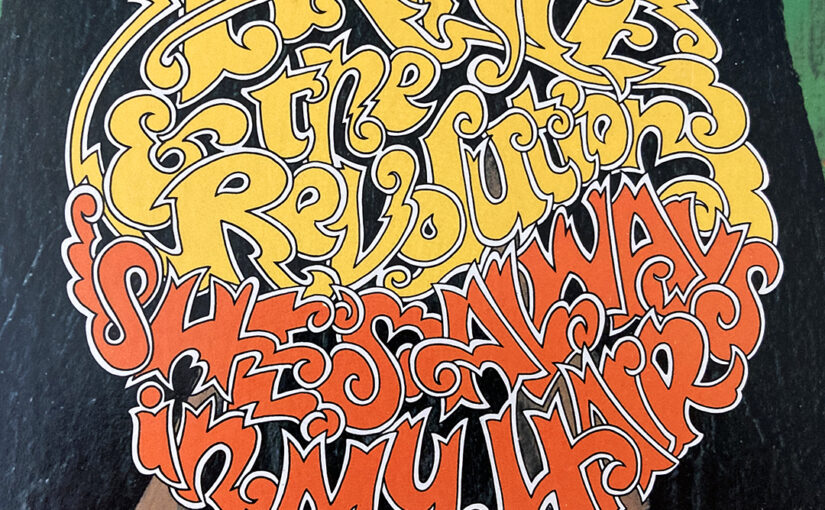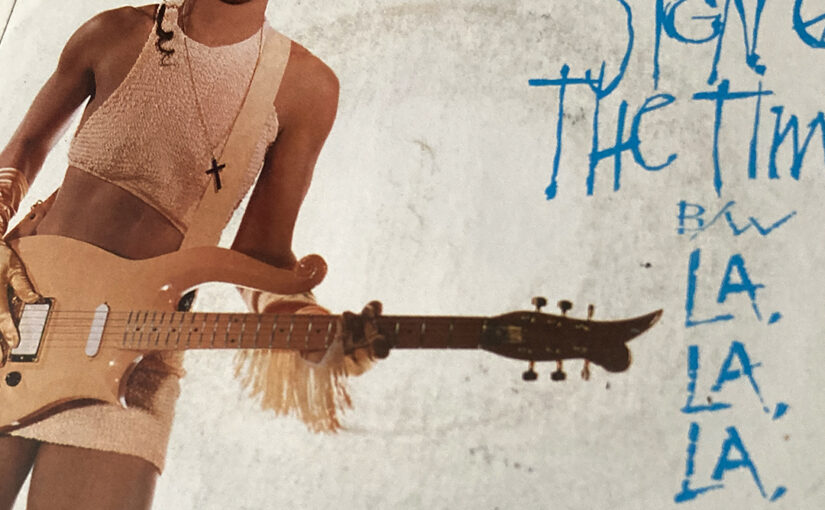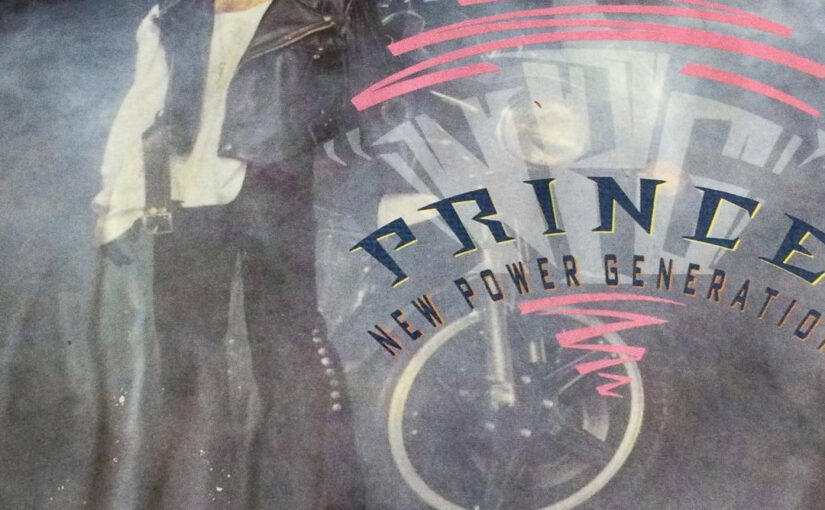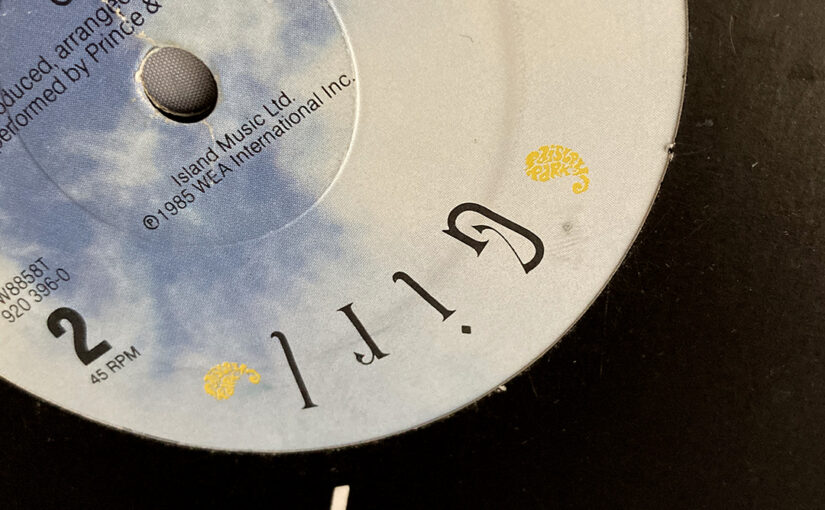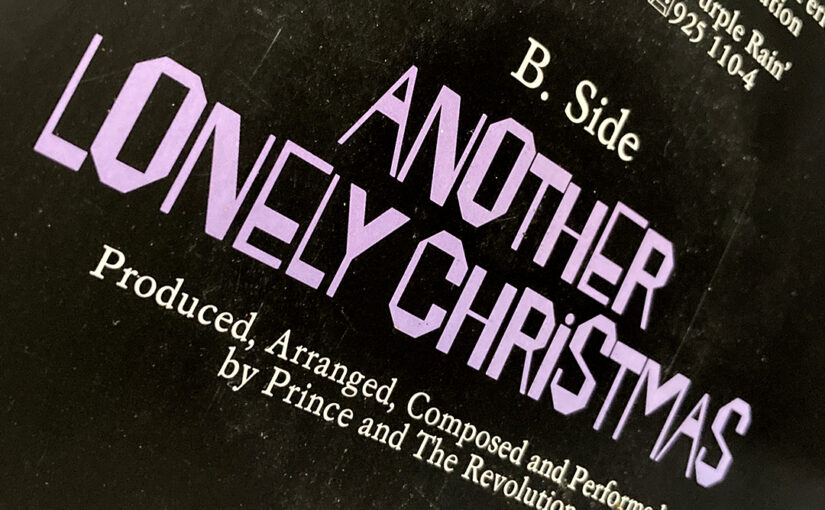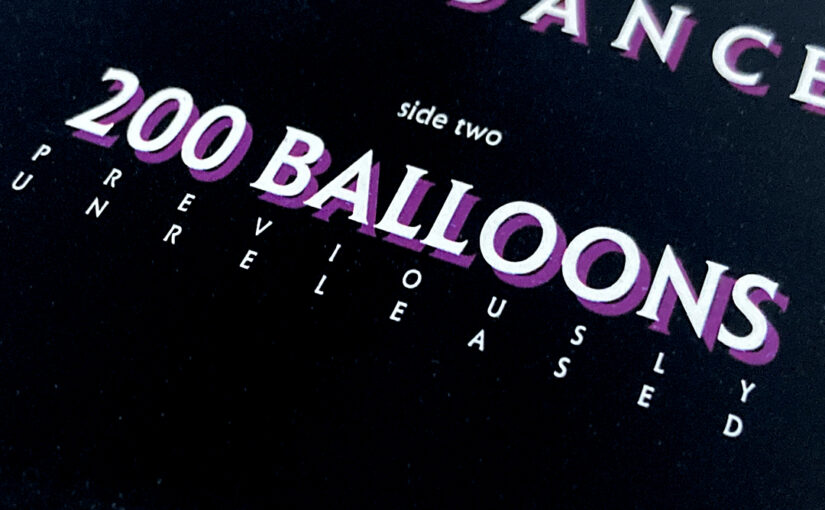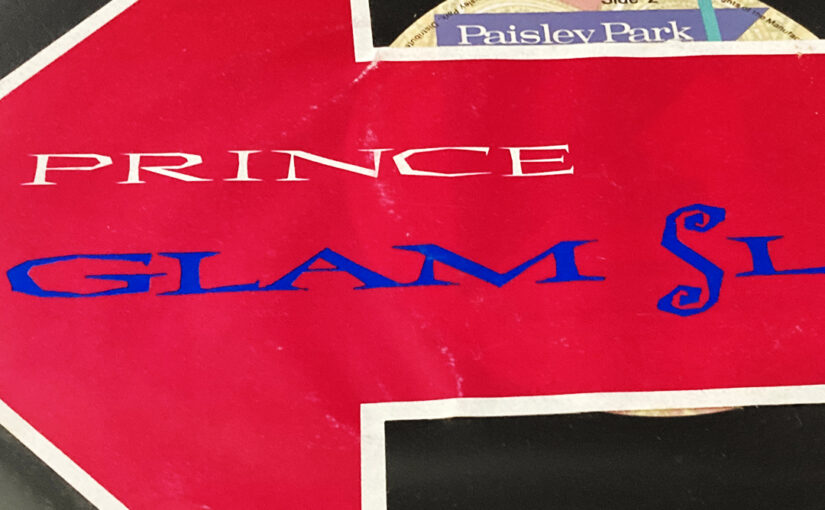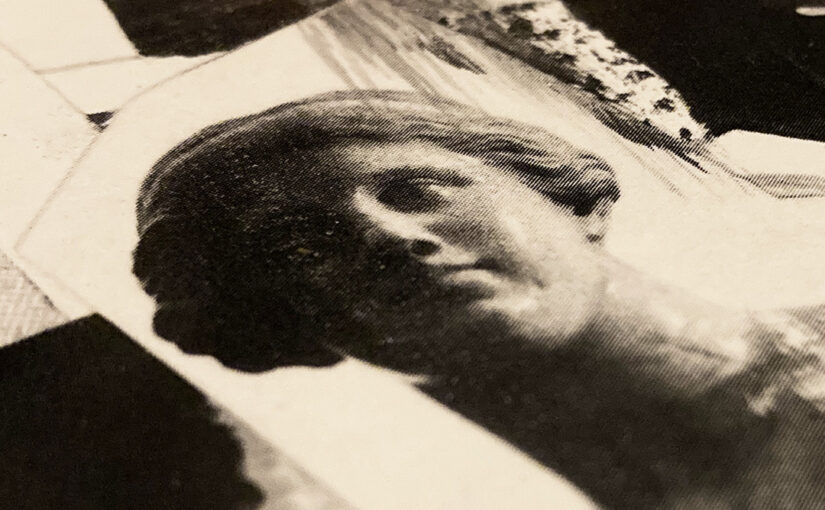If I Was Your Girlfriend single (1987)
At first, Shockadelica seems to be the tale of a man-eating vamp that can control men’s minds with her hypnotising sexual allure. A common trope found in rock, especially during 1967’s Summer of Love where a glut of songs about bewitching women casting spells with their Strange Brew and Summer Wine inspired a parody in Bedazzled when Peter Cook bucks the trend by emotionlessly singing “you bore me” and “you fill me with inertia” to the siren-like dancers spinning around him.
Prince has been here before on Come Elektra Tuesday but is Shockadelica really another tale of a Black Magic Woman? In the 12” Long Version we’re twice told that the title describes a feeling of “lonely cold”. If Shockadelica is a feeling, then maybe the seductress is instead called Camille? Lyric sites tend to place punctuation or the chorus break in between the words Camille and Shockadelica, making the first mention of Prince’s alter-ego ambiguous. But in his handwritten notes there’s nothing separating them. Camille is Shockadelica and Shockadelica is a feeling of lonely cold. There is no girl, only a mirage of anthropomorphised loneliness that comes from sleeping alone with lustful thoughts. Prince portrayed these energy-sapping thoughts as a girl that wouldn’t let him play his guitar, revealing he viewed them as a threat to his creativity.
One reason why people want to separate Camille and Shockadelica is because of how the Camille character developed. They point to the Poem of Camille in the Lovesexy programme which explicitly states Camille is a boy, believing he can’t be the girl in Shockadelica. Others square this contradiction by pointing to Prince’s allusion in an online interview that Camille was named after a 19th Century ‘hermaphrodite’ and is instead intersex. But these are mere labels that miss the point. Camille is beyond gender. Supragender. Camille is pure id. A canvas for all the drives that make up Prince, untied by the social constructions of gender, race and class.
In the handwritten lyrics to Shockadelica, the most reworked line is the one where Camille is introduced, suggesting an internal battle to exorcise this demon onto the page. The word Camille is written, then crossed out. Then the word Shockadelica gets the same treatment, followed by crossed-out lines telling us “I’m so in love” and “I want a baby all the time”. When he finally commits to the line “the reason is Camille Shockadelica” (baptised by tenderly dotting the final I with a heart) he’s writing in pencil now rather than pen – has time elapsed or is the name of his inner tormentor too dangerous to be written in indelible ink?
There’s no putting the genie back in the bottle now though. After a hard labour, his shadow self is screaming on the birthing table of consciousness and would become Prince’s muse for some of the funkiest material he would ever write. The new-born Camille wasn’t fully fleshed out yet. Prince had personified a feeling of lustful loneliness, and now he had that vessel he could begin to pour in all the repressed aspects of his psyche, developing the character over time. Camille is many sides of Prince – the lonely and lustful, but also the jealous, spiteful, needy and vulnerable. Fully-formed or not, all of those aspects of Prince can still be found in Shockadelica. He wrote it because he was jealous of Jesse Johnson coming up with the title for his album and wanted to spite him by hijacking the name. This along with the lyrics of lust and loneliness, and the need to silence his critics and reassert his independence in the ashes of the Revolution created the circumstances for Camille’s birth, thus kicking off a four-album psychodrama that would consume him for the rest of the decade.
Several more Camille songs were recorded over the next couple of months and a Camille album was planned for release that would bear no mention of Prince. This didn’t come to pass but Housequake, Strange Relationship and If I was Your Girlfriend all turn up on the Sign o’ the Times album, along with the Camille-credited U Got the Look. On this release (half of which was recorded before Shockadelica), Camille is used as one of many colours in Prince’s artistic palette but that changes on his next solo project.
The genesis of The Black Album is described in the aforementioned Poem of Camille as an attempt to stick “his long funk in competition’s face”. Here Camille is a vehicle to smite his critics in the same way that Housequake, recorded the morning after he officially disbanded the Revolution, was a declaration to the doubters of his Blackness. Prince was forging a new identity to reclaim his crown of funk. He had a point to prove. In the Lovesexy programme he writes “Camille mustered all the hate that he was able. Hate 4 the ones who ever doubted his game. Hate 4 the ones who ever doubted his name. ’Tis nobody funkier – let the Black Album fly.’”
Worried that the inspiration behind The Black Album was less than pure, he then recorded Lovesexy where Camille was recast as a naive, tricked fool, who had been led astray by another character, Spooky Electric. Camille had now become fully subsumed with Prince’s ego and any dark thoughts are instead attributed to his former shadow’s shadow self. This battle between the two characters is the theme running throughout Lovesexy and allowed Prince in concerts to indulge his dark muse in the first half, and then atone in the second by presenting his more spiritual material as Camille’s salvation.
Prince reconciled these two opposing sides more effectively on the Batman album where, after being given archetypal hero and villain characters to write from the perspective of, he identified with both and ended the battle by crafting another alter-ego that synthesised Camille and Spooky Electric into one split personality: Gemini. And this final fusion appears to be the conclusion of Camille’s character arc (he’ll later tell us in My Name is Prince he has “two sides and they’re both friends”). In the Graffiti Bridge film, the protagonist, who in early scripts was called Camille Blue, became The Kid from Purple Rain and Camille went into hibernation for the 90s, only resurfacing sporadically in the new millennium, most notably when Prince again wished to rub his critics’ faces in his spite-tastic F.U.N.K.
Despite Prince’s best rewrite attempts, to me Camille will always be the lust-crazed nymphomaniac of Feel U Up – the one Ween portray brilliantly in their sleazy Shockadelica cover, IWLYP. That’s because the true power of Camille, underneath the vocal effects and backstory, is the pure thrill of hearing Prince’s unrestrained id let loose in the studio, speaking to the repressed Camille that lurks down deep within all of us.



